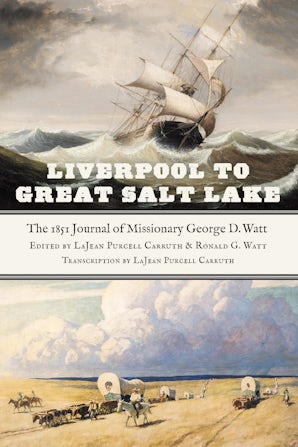"[Liverpool to Great Salt Lake is] an important contributor when considering how we can better understand the complexities and realities of the Latter-day Saint trek."—Samuel Mitchell, Dawning of a Brighter Day
“LaJean Purcell Carruth and Ronald G. Watt make mid-nineteenth-century pioneers speak as if ‘out of the dust,’ bringing us into contact with their hardships, humor, and faith.”—John G. Turner, author of Brigham Young: Pioneer Prophet
“Carruth and Watt expand greatly our understanding of the nineteenth-century Mormon experience, especially the emigrant trek to Utah, and the theology of Orson Pratt. Scholars and general readers alike will appreciate the book’s significance and substance.”—John Sillito, professor emeritus for libraries at Weber State University
“Liverpool to Great Salt Lake is a delight. George D. Watt’s newly transcribed journal divides his international journey into three phases: ocean voyage, river steamer, and overland wagons, each marked by Watt’s penchant for observing both the unusual and the mundane. He notes births and deaths, Sunday observances and sometimes the lack thereof, gossip and its consequences, sermons and seasickness, broken pickle jars, pets as passengers, drowning oxen, people overboard, violent thunderstorms at sea and on the Great Plains, dead cattle, and the ‘sin’ of killing buffalo for sport. This and so much more make Watt’s journal a welcome addition to the migrant genre and an absolute pleasure to read.”—W. Paul Reeve, author of Religion of a Different Color: Race and the Mormon Struggle for Whiteness
“Although nineteenth-century migrants did not benefit from Watt’s journal, modern readers can glean much from its pages now. Liverpool to Great Salt Lake has a readable style that is easily accessible to general readers and will appeal to a broad audience. It is suitable for classroom adoption and is also a valuable source for academic research and specialists in the field who study and write about the Atlantic crossing, steamboat travel, and overland migration in the mid-nineteenth century.”—Jay H. Buckley, director of the Charles Redd Center for Western Studies at Brigham Young University
